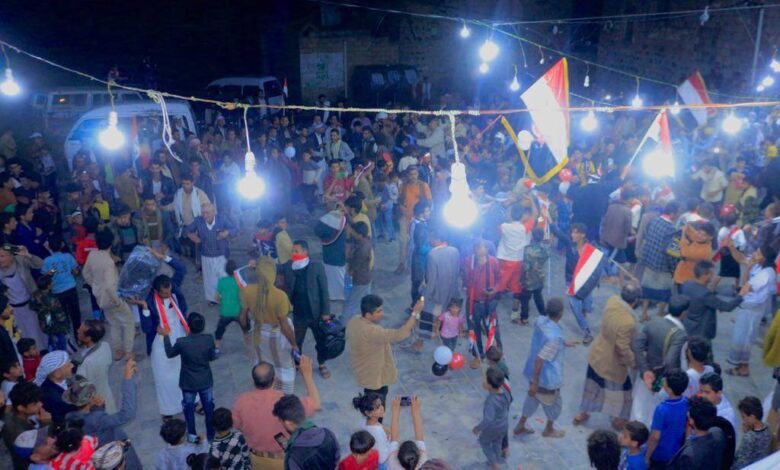Yemeni Rights Center Documents 130 Houthi Violations Against Those Celebrating September 26 in Sana’a Alone

Yemen Monitor/Newsroom
The Capital Media Center reported on Tuesday that it had documented approximately 130 crimes and violations committed by the Houthi armed group during the past month against those celebrating the 62nd anniversary of the 26 September Revolution in the capital, Sana’a.
According to the center’s report published on its official website, 130 civilians, including 34 women, were abducted from the streets on various days throughout the month. The militia abducted 34 people from their homes and transferred them to its prisons in Dhamar Governorate, while 62 others were abducted from the streets while strolling or going about their daily activities. Many of these individuals were also transferred to Dhamar.
The number of women abducted for fear of organizing celebrations for the 26th of September reached 34. Some were abducted from Al-Sab’een Park, others from Hadda Street near Al-Masbahi roundabout, and still others from the Sana’a University neighborhood.
According to the report, the Houthis emptied a number of police stations and detained the abducted women, treating them with humiliation and transporting them to detention centers.
To accommodate the detainees, the Houthis converted three government schools into additional prisons in the Sab’een district, while others were detained for hours, according to observers.
Among the accompanying violations, the report documented the Houthis’ confiscation of hundreds of mobile phones, particularly from women, on charges of taking pictures. This coincided with the Houthis deploying their members in the streets, including those known as “Zainabiyats,” to threaten any women suspected of preparing for celebrations commemorating the 26th of September.
According to the report, the Zainabiyats’ role in the violations carried out by the Houthis included raiding homes and searching women’s phones.
The report’s authors also documented threats made by security supervisors, neighborhood leaders, and others working in the criminal investigation departments in Sana’a. These threats targeted both youth and children as a way of intimidating their fathers from celebrating, even on social media.
Among the most prominent public threats made by Houthi leaders was the threat issued by the group’s leader in one of his recent speeches, labeling those celebrating the revolution as agents and “slaves.” Many considered this a highly threatening statement, indicating the militia’s intention to carry out suppression campaigns against those celebrating the 26th of September Revolution.
The report documented an implicit threat from the former Minister of Higher Education in the unrecognized coup government, Hussein Hazb, against those celebrating the anniversary of the 26th of September, implying liquidation and killing.
The threat also extended to tribal, party, and civil leaders who adopted calls for celebration, after citing a Yemeni proverb that says, “Whoever advises you to kill will not help you pay the blood money,” a proverb commonly used for those who receive advice from others that may lead them to disaster.
Hazb stated that the celebration of the anniversary of September is a private event organized by the militia government and described the revolution as a “failure,” indicating that the unrecognized government had not authorized those wishing to commemorate this anniversary.
Moreover, Houthi leader Nasr al-Din Amer, head of the Houthi version of the Saba News Agency, threatened to record a video of beheading those who celebrate the anniversary of the 26th of September.
Amer accused the celebrants of being tools of Zionism, claiming that there is an attempt to use internal front issues and mobilize the street internally to incite chaos and unrest, and to target the security and public tranquility of the people, which is completely rejected.
Other threats were also documented by Houthi leaders, including Muhammad Ali al-Houthi, Ahmed Mutahr al-Shami, Abdullah al-Naimi, and Abdulqader al-Murtadha, all of which coincided with the kidnapping campaigns and the deployment of the group’s elements in alleys, neighborhoods, and streets leading to Al-Sab’een Square.




